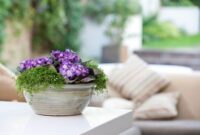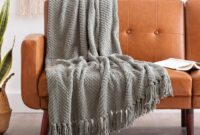Energy-efficient lighting for home interiors sets the stage for a brighter, more sustainable living environment. Explore the world of eco-friendly lighting solutions that not only save energy but also enhance the beauty of your home.
Discover the various types of energy-efficient lighting options, design considerations, and installation tips to transform your living spaces into well-lit sanctuaries.
Introduction to Energy-Efficient Lighting
Energy-efficient lighting refers to lighting fixtures and bulbs that consume less energy compared to traditional incandescent bulbs. These lights are designed to provide the same amount of light while using significantly less power, making them a more sustainable and cost-effective option for home interiors.
Using energy-efficient lighting in home interiors is crucial for reducing electricity consumption and lowering utility bills. With the rising awareness of environmental issues and the need to conserve energy, switching to energy-efficient lighting is a simple yet effective way to contribute to a greener planet.
Benefits of Energy-Efficient Lighting
- Lower Energy Costs: Energy-efficient lighting can help reduce electricity bills by consuming less power.
- Longer Lifespan: Energy-efficient bulbs have a longer lifespan than traditional incandescent bulbs, reducing the frequency of replacements.
- Environmental Impact: By using less energy, energy-efficient lighting helps reduce greenhouse gas emissions and environmental impact.
- Improved Lighting Quality: Energy-efficient bulbs provide high-quality light output, enhancing the aesthetics of home interiors.
- Heat Reduction: Energy-efficient lighting generates less heat, making it safer and more comfortable in living spaces.
Types of Energy-Efficient Lighting: Energy-efficient Lighting For Home Interiors

Energy-efficient lighting options offer a variety of choices for illuminating your home interiors while saving energy and reducing electricity bills. Let’s explore some of the common types of energy-efficient lighting and how they can be effectively used in different rooms of the house.
LED Lighting
LED (Light Emitting Diode) lighting has become increasingly popular due to its energy efficiency, long lifespan, and versatility. LED bulbs use significantly less energy than traditional incandescent bulbs and are available in a wide range of color temperatures to suit different needs. In home interiors, LED lighting can be used for ambient lighting, task lighting, accent lighting, and even decorative lighting. For example, you can use LED recessed lights in the kitchen for bright task lighting or LED strip lights in the living room for subtle ambient lighting.
CFL Lighting
Compact Fluorescent Lamps (CFLs) are another energy-efficient lighting option that consumes less energy and lasts longer than incandescent bulbs. CFL bulbs are available in various shapes and sizes, making them suitable for different fixtures in the home. They are ideal for general lighting in rooms like the bedroom, living room, or dining room. You can also use CFL bulbs in table lamps or floor lamps to provide focused task lighting.
Halogen Lighting
Halogen bulbs are a type of incandescent lighting that is more energy-efficient than traditional incandescent bulbs but less so compared to LED and CFL options. Halogen bulbs produce a bright, white light that is similar to natural daylight, making them ideal for areas where accurate color rendering is important, such as in the kitchen or bathroom. They are also suitable for accent lighting to highlight artwork or architectural features in the home.
Overall, choosing energy-efficient lighting options like LED, CFL, and halogen can not only enhance the aesthetics of your home interiors but also contribute to energy savings and a more sustainable lifestyle.
Design Considerations for Energy-Efficient Lighting

When planning and designing a lighting layout for maximum energy efficiency, it is essential to consider various factors such as the type of fixtures, bulbs, and the overall design of the space. By selecting the right lighting options and implementing smart design strategies, you can create a well-lit and energy-efficient home. Here are some key considerations to keep in mind:
Selecting the Right Fixtures and Bulbs
- Choose LED bulbs: LED bulbs are highly energy-efficient and last longer than traditional incandescent bulbs, making them a cost-effective choice for lighting your home.
- Opt for adjustable fixtures: Use fixtures with dimmers or adjustable settings to control the amount of light based on the time of day or specific lighting needs in different areas of your home.
- Consider natural light: Maximize natural light sources by incorporating windows, skylights, and light tubes to reduce the need for artificial lighting during the day.
Layering Lighting for Energy Efficiency
- Ambient lighting: Install overhead fixtures or recessed lights to provide general illumination throughout the room.
- Task lighting: Add task-specific lighting such as under-cabinet lights in the kitchen or desk lamps in work areas to enhance visibility and reduce the need for brighter ambient lighting.
- Accent lighting: Use accent lights to highlight architectural features, artwork, or decorative elements, creating visual interest and reducing the overall lighting requirements.
Installation and Maintenance of Energy-Efficient Lighting

When it comes to installing and maintaining energy-efficient lighting fixtures, following proper procedures is essential to ensure optimal performance and longevity. Here we will provide step-by-step instructions for installation, best practices for maintenance, and tips for troubleshooting common issues.
Installing Energy-Efficient Lighting Fixtures
Installing energy-efficient lighting fixtures requires careful attention to detail to ensure they function properly and provide the desired lighting effect. Follow these steps for a successful installation:
- Turn off the power supply to the area where you will be installing the fixture to avoid any electrical accidents.
- Remove the existing light fixture carefully, following the manufacturer’s instructions.
- Install the energy-efficient lighting fixture according to the manufacturer’s guidelines, making sure all connections are secure.
- Test the fixture to ensure it is working correctly before closing up the installation.
Maintaining Energy-Efficient Lighting
Maintaining energy-efficient lighting is crucial to extend its lifespan and ensure it continues to operate efficiently. Here are some best practices for maintaining your energy-efficient lighting:
- Regularly clean the fixtures and bulbs to remove dust and debris that can affect their performance.
- Check for any loose connections or signs of wear and tear and address them promptly to prevent further damage.
- Replace bulbs or components as needed, following the manufacturer’s recommendations for compatible replacements.
- Schedule regular inspections by a professional to identify any issues early on and prevent costly repairs.
Troubleshooting Common Issues, Energy-efficient lighting for home interiors
Despite the benefits of energy-efficient lighting, there may be times when issues arise. Here are some tips for troubleshooting common problems with energy-efficient lighting systems:
- If the light flickers or dims, check for loose connections or faulty bulbs and replace them if necessary.
- If the fixture does not turn on, verify that the power supply is working correctly and replace any damaged components.
- If the light is too dim or too bright, adjust the settings or consider replacing the bulb with a different wattage to achieve the desired lighting level.
- If the fixture emits a buzzing sound, it may indicate a problem with the ballast or wiring that requires professional attention.
In conclusion, Energy-efficient lighting for home interiors offers a blend of functionality and style, paving the way for a greener future while illuminating your home with efficiency. Take the first step towards a brighter and more sustainable living space today.
When it comes to creating a peaceful and harmonious space, Japanese zen home décor ideas offer a unique blend of simplicity and elegance. From minimalist furniture to natural elements like bamboo and stone, Japanese zen home décor ideas focus on creating a serene atmosphere that promotes relaxation and mindfulness.
If you’re looking to add a touch of eclectic charm to your living room, bohemian living room décor is the perfect choice. With vibrant colors, mixed patterns, and a cozy, laid-back vibe, Bohemian living room décor creates a welcoming and artistic space that reflects your free-spirited personality.
Choosing the perfect color for your kitchen can transform the entire look and feel of the space. Whether you prefer a bold statement color or a calming neutral tone, How to pick the perfect color for your kitchen provides helpful tips and inspiration to help you make the right choice for your kitchen design.




